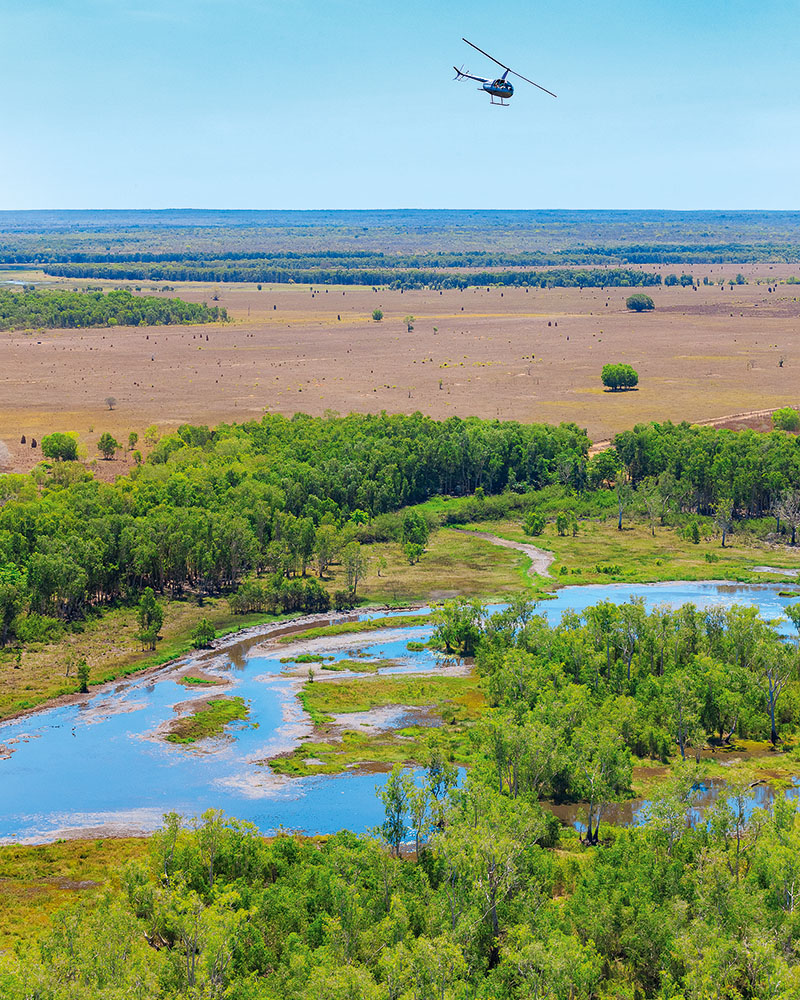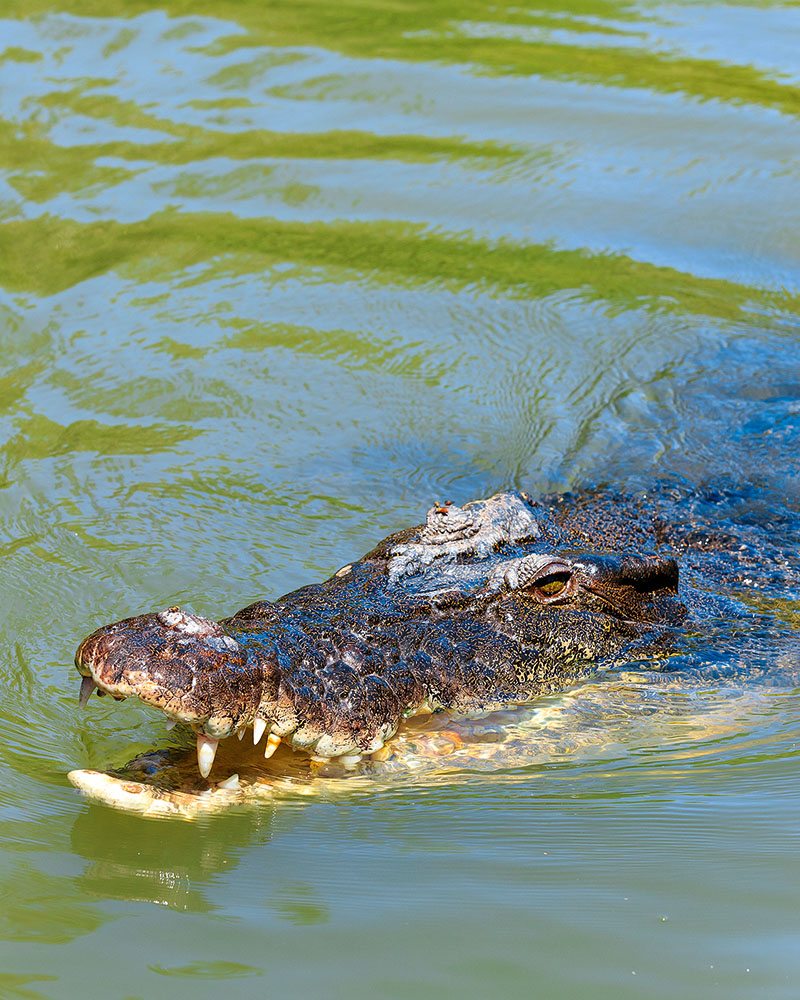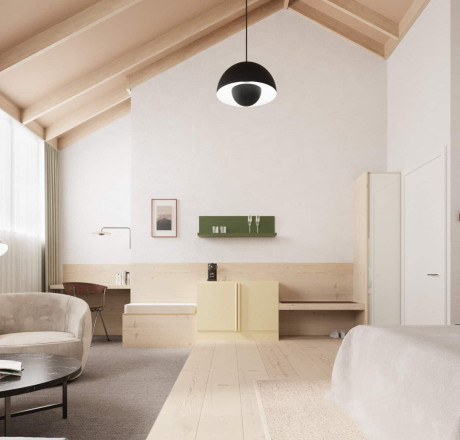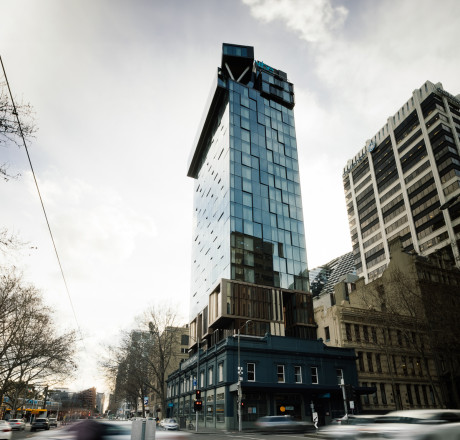Australia
Australia
Top End Talent
All that reptilian rage is caused by Matt and his crew venturing into crocodile country each year to swipe their eggs. The Northern Territory’s wet season brings mama crocs to the banks of rivers to make nests where they lay between 40 and 60 eggs. There’s a quota allotted to collectors (about 50,000 in the NT alone), who take on the high-risk job and sell the eggs to crocodile farms where the hatchlings will eventually be made into handbags and shoes. The tricky part is the crocodiles don’t leave the nest once they’ve deposited their future family, instead loitering to protect it from predators like goannas, feral pigs and humans.
Hanging around and waiting for her to head off hunting just doesn’t work. “No, you go in and push her off,” says the 36-year-old, whom fans of Nat Geo TV will know as the Outback Wrangler. “The best thing is then you know where she is. You don’t want to go in with 15-foot cane grass all around, everything making a noise, and the next thing you know she roars out of a hole and you’re trying to get out of the way.”
From the 1940s to the 70s, crocs were fair game for anyone who fancied themselves as a hunter. Their numbers were thought to have dropped to as few as 3000 before the Northern Territory government legislated to protect them in 1971. Egg collecting began in the mid-90s, but it’s carefully monitored and there’s now thought to be a healthy croc population of about 130,000 across the Territory.
“Everything we collect we take at the beginning of the season from the floodplains,” Matt explains. “If they’re left any longer they cook and then they go under water, so the survival rate is pretty much zilch.
“The ones that do survive are laid a bit later in the season and on higher ground in shaded areas.”
But risking life and limb (literally) only takes up a few weeks a year. Matt wears a number of hats, and collecting eggs is just one of the jobs he does. Some days he and the team have to capture and relocate huge saltwater crocodiles from places they might cause harm to the neighbours. On others he’s keeping an eye on his business, Outback Floatplanes.
It’s one of his adventures that has brought us here to Sweets Lagoon, about 55 kilometres southwest of Darwin. The Ultimate Tour is the perfect blend of epic landscape and wildlife watching.
From the private hangers at Darwin Airport, it’s a short ride in a floatplane to get here. Once on board the large cruiser anchored mid-waterway, everyone piles on to an airboat and straps in. A white egret called Rose is perched at the back, near the propeller, and hops along the seats before depositing herself on the helipad.
Down the Finniss River we go, before turning off onto tiny estuaries. Waterbirds, including jabirus and hundreds of magpie geese, take off and fill the clear blue sky as we hoon past. As the wetland vegetation thickens, kingfishers can be seen sitting on branches overhanging the water. Then the stream widens substantially and we slow right down.
From across the billabong a large croc begins floating towards us. Its name is Bonecrusher and, at almost 4.5 metres, it’s an imposing beast. “Don’t hang anything over the side,” says the guide. “He likes to play.”
Back on the deck of the cruiser, we sit down to lunch – barbecued fresh barramundi, of course – before everyone takes a helicopter ride and does fast laps of the river and surrounding estuaries in the airboat.
Up in the air with Matt, we loop over the site, the chatter between him and the other pilots filling our headsets. One of the other choppers is heading in to land on the helipad when it briefly hovers just metres away.
“What are you doing?” Matt asks the other pilot.
“Rose is sitting there.”
“That bird,” he says, and banks sharply, just as we see her take off down the river. “It’s got a death wish.”
Back on land, Matt explains how he saw this site while flying around searching for crocodile nests. “It was earmarked as a spot that might be good for tourism, so I bought a couple of boats and developed this,” he says. “It’s something totally different to what anyone else has done in the Territory.”
Having grown up in South Australia, he headed north after school to work on oil-drilling rigs in Arnhem Land and central Australia and made a bit of cash. His helicopter pilot’s license came next, followed by stints mustering cattle from the air in the outback and flying in Canada. “I bought houses and properties when I was younger,” he says, “and they never did anything for me, so I chucked everything in to this operation.”
There are special considerations when working with tourists in the Top End – safety is at the head of the list, but then there’s comfort. “We needed to design something that kept people moving,” Matt explains. “When it’s so hot you need to keep the airflow up, because as soon as you stop it gets hot and humid and the mosquitoes move in as well. That’s why we’ve got the choppers, the airboats and the cruise.”
The tour has been running for two years now and, with Matt’s profile rising, there were three months during 2015 when it was booked out – three trips a day, seven days a week. Into this year’s wet season, the company began increasing its number of heli-fishing tours, plus there’s work on a camp being done and plans are in place to build some luxury accommodation for people who want to stay for longer.
About four hours after we first landed, the floatplane has arrived with a new load of guests and is ready to take us back to Darwin. As he’s stepping back into his helicopter, I ask Matt why he chose this life. “It’s the freedom. Being able to show people this place and give them a totally different experience.” He pauses for just a moment: “And being able to work with the crocodiles.”
Words Carrie Hutchinson
Photos Catherine Sutherland
Tags: animal encounter, australia, travel job
 (
(














